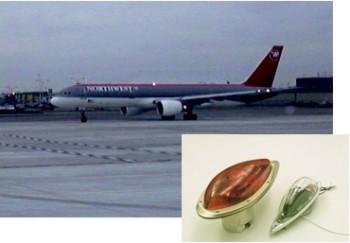Effective intensity of flashing lights

Flashing lights, such as aircraft anti-collision lights, marine aids-to-navigation lights, obstruction lights, and emergency vehicle warning lights, are characterized according to their effective intensity (cd). Effective intensity is defined as luminous intensity (cd) of a steady light having the same relative spectral distribution as the flashing light, which would have the same luminous range (or visual range in aviation terminology) as the flashing light under identical conditions of observation. This term is intended to account for the temporal response of the human visual system, where pulses of shorter duration and high peak intensities are more conspicuous than slower pulses with low peak intensities despite having the same time-integrated intensity (candela second).
There are three commonly used formulae for calculating effective intensity (one developed by Allard in 1876, another developed by Blondel-Rey in 1911, and the Form Factor method). Although these different formulae yield the same value for the effective intensity of very short pulses (~1 ms or less), they typically yield different results depending on pulse shape and duration. These results are particularly serious for warning lights that emit a train of flashes (e.g., one visible flash consisting of 2 or more flashes in short intervals), such as devices employing LEDs. Not only do the different formulae yield different values for effective intensity, but the formula employed varies depending on the country and application, preventing comparison of the values. Thus, we are working with the (International Commission on Illumination) CIE to develop an international standard for the definition of effective intensity.
NIST studied the differences in the three formulae, calculating effective intensity of various waveforms of flash by simulation analysis. The study demonstrated that all the three methods have problems, particularly for multiple flashes and some specific forms of pulse. We solved these problems by modifying the Allard method and developing the Modified Allard method. According to this method, the effective intensity can be calculated from the waveform of pulse or measured directly with simple analog electronic circuit without measuring the waveform. The Modified Allard method has been adopted in the draft document of CIE Technical Committee 2-49 Photometry of Flashing Lights, and a publication is being prepared.
Selected Publications:
Contacts
Project Leader
-
(301) 975-2321

